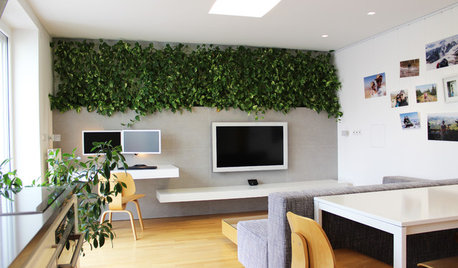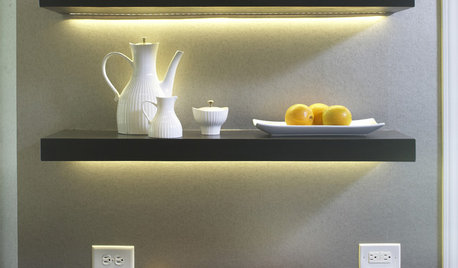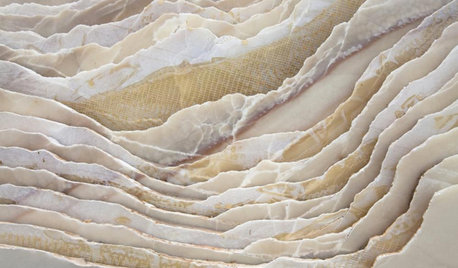rcmjr - questions about LED rope lights
woodswell
17 years ago
Related Stories

LIGHTINGThe Lowdown on High-Efficiency LED Lighting
Learn about LED tapes, ropes, pucks and more to create a flexible and energy-efficient lighting design that looks great
Full Story
LIGHTINGWhat to Know About Switching to LED Lightbulbs
If you’ve been thinking about changing over to LEDs but aren't sure how to do it and which to buy, this story is for you
Full Story
LIGHTING5 Questions to Ask for the Best Room Lighting
Get your overhead, task and accent lighting right for decorative beauty, less eyestrain and a focus exactly where you want
Full Story
MOST POPULAR8 Questions to Ask Yourself Before Meeting With Your Designer
Thinking in advance about how you use your space will get your first design consultation off to its best start
Full Story
HOUZZ TOURSMy Houzz: LEDs and a Living Wall Color a Minimalist Slovakian Home
Thanks to a modern overhaul, this small Central European apartment is now a testament to efficiency and thoughtful design
Full Story
KITCHEN DESIGN12 Ways to Light Your Kitchen With LEDs
See how to use new energy-saving lights to illuminate your kitchen, light a countertop and add style, too
Full Story
GREEN DECORATING8 Questions to Help You See Through Green Hype
With the ecofriendly bandwagon picking up some dubious passengers, here's how to tell truly green products and services from the imposters
Full Story
KITCHEN DESIGN9 Questions to Ask When Planning a Kitchen Pantry
Avoid blunders and get the storage space and layout you need by asking these questions before you begin
Full Story
GREEN BUILDINGWhat's LEED All About, Anyway?
If you're looking for a sustainable, energy-efficient home, look into LEED certification. Learn about the program and its rating system here
Full Story
WORLD OF DESIGN8 Things You Didn’t Know About Italian Marble
How did the ancients extract marble? What makes it white or colored? We unearth fascinating facts about this luxurious stone
Full Story





bob_brown
RCMJr
Related Professionals
Lockhart Solar Energy Systems · Hercules Solar Energy Systems · Moreno Valley Solar Energy Systems · Palo Alto Solar Energy Systems · Melville Solar Energy Systems · Woodland Design-Build Firms · Newark Home Builders · Ocean Acres Home Builders · South Hill Home Builders · Georgetown Roofing & Gutters · Mooresville Roofing & Gutters · Newton Roofing & Gutters · Orlando Roofing & Gutters · Sauk Village Roofing & Gutters · Dorchester Roofing & GutterswoodswellOriginal Author
RCMJr
DavidR
woodswellOriginal Author
bob_brown
RCMJr
woodswellOriginal Author
bob_brown
woodswellOriginal Author
DavidR
RCMJr
DavidR
RCMJr
DavidR
DavidR
RCMJr
DavidR
RCMJr
xtremecc